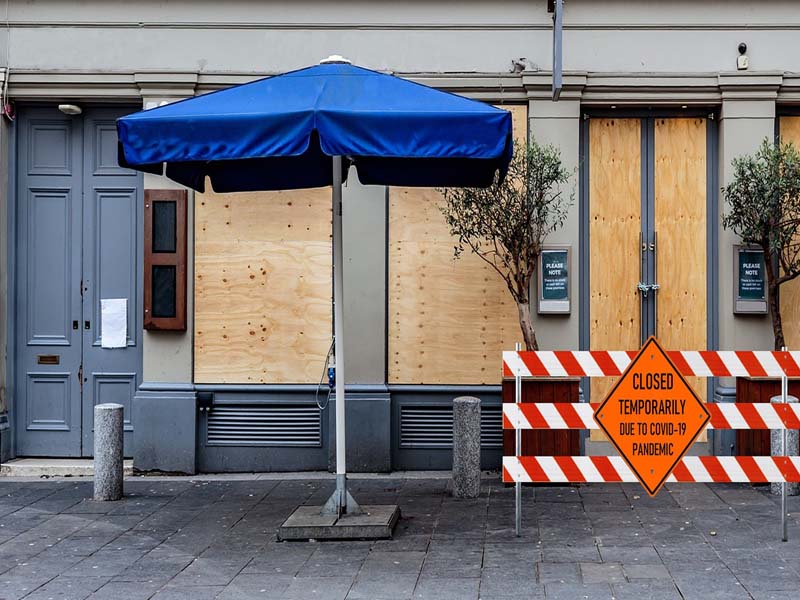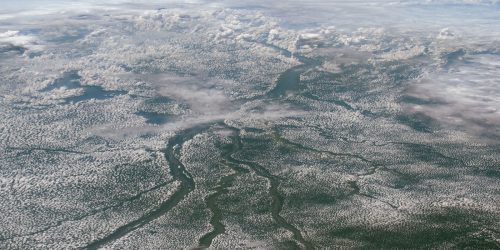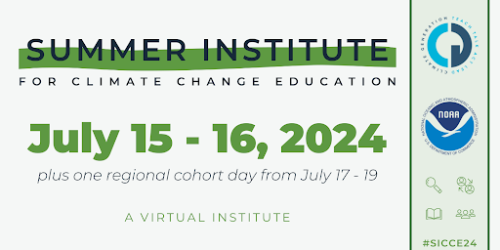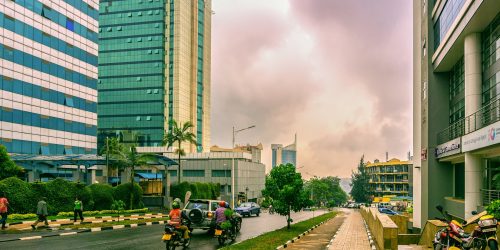CPO’s Atmospheric Chemistry, Carbon Cycle, and Climate (AC4) program and Climate Observations and Monitoring (COM) program are announcing 8 new 2-year projects in Fiscal Year 2021 that aim to leverage the natural experiment created by the significant reduction of emissions during the COVID-19 pandemic to understand how anthropogenic activities affect local and regional air quality. The competitively selected projects total $3.18 million grant awards 1.

Human activity has been profoundly altered by orders in numerous countries to shelter in place and other restrictions on business as usual. With restrictions in place for weeks or months at a time, emissions of all trace gases and aerosols have decreased. It falls on careful curation and analysis of any existing measurements, either in situ or from satellites, to quantify the exact impact of the pandemic on atmospheric composition, including its place in a larger context of long-term trends, and its variability across the globe. The analysis of this extreme event in atmospheric composition will not only help to understand the episode itself, but could address fundamental questions in atmospheric transport and chemistry and inform future mitigation strategies, especially as chemical regimes might be changing with drastic emissions reductions.
In response to the unique opportunity to study the atmospheric composition effects of the ongoing pandemic in FY21, AC4 and COM programs invited proposals focused on, but not limited to, one or more of the following:
- Analysis of pandemic-related impacts within individual cities or regions in the United States, or impacts of changes in particular anthropogenic activity
- Comparative studies across different regions or sectors of varying characteristics
- The use of previously collected and existing in situ measurements
- Collection of complementary in situ data to fully document atmospheric changes after the pandemic
- Application of JPSS and GOES satellite products, including identification of the best suite of products for assessing and monitoring impacts on national and global scales
- Development of observational-based datasets (inclusive of satellites, in-situ) or emission inventories, through compilation or integration, that enable analysis of pandemic impacts
- Identification of atmospheric constituents, which can serve as markers of particular human and/or economic activity—agriculture, shipping, air traffic etc.—as affected by the pandemic disruptions and assessment of its return to previous levels
- Assessment of the overall magnitude of the event (as measured in changes in emissions and concentrations), and its place in a long term and/or national/global context
The eight new projects 2 funded by the AC4 and COM programs in FY21 are:
- Changes in Aerosol Loading and Composition in Atlanta Driven by Changes in Anthropogenic Emissions during the COVID-19 Pandemic
The overall goal of the proposed project is to analyze a comprehensive suite of measurements conducted in urban Atlanta during 2020 to investigate the impacts of COVID-19 containment efforts on the emissions and fates of volatile organic compounds (VOCs), as well as organic aerosol loading and composition in urban environments. The southeastern United States is characterized by intense biogenic-anthropogenic interactions, where a large fraction of secondary organic aerosol is from natural sources (biogenic) but modulated by human-caused (anthropogenic) pollutants. Results from this study will provide new insights into how reduced anthropogenic emissions influence organic aerosol loading and composition in the region, as emissions continue to decrease in the future with mitigation strategies. Further, comprehensive and long-term (spanning multiple seasons) measurements will allow for thorough characterization of pandemic impacts on atmospheric composition in urban environments with intense biogenic emissions.- PI: Nga Lee (Sally) Ng, Georgia Institute of Technology
- Co-PI: Jennifer Kaiser, Georgia Institute of Technology
- Using Observations of Gaseous Compounds in the LA Basin during COVID-19 to Elucidate Sources and Atmospheric Processes Affecting Urban Air Quality
Despite decades of emissions reductions, the South Coast Air Basin, which includes Los Angeles, CA and surrounding areas, experiences some of the worst air quality in the country; with violations of the National Ambient Air Quality Standard (NAAQS) for 8-hr ozone (O3) on one in three days. Further, while the past decades have also seen steadily decreasing levels of O3 and fine particulate matter (PM2.5), of which secondary organic aerosol (SOA) is a significant fraction, recent years have seen a leveling of these trends. Thus there are many unanswered questions about what drives production of O3 and SOA formation in Southern California, which are relevant in the broader context of improving the process-level understanding of atmospheric chemistry under relatively low nitrogen oxide (NOx) conditions, and as influenced by a changing mix of emissions; and the ability to represent these processes and sources in predictive models. This project will build on a collaborative effort, initiated in March 2020, to collect in-situ data in Pasadena, CA within the South Coast Air Basin. A suite of gas- and particle-phase instrumentation was co-located on the Caltech campus and samples were collected from April-August 2020. The data collected and analyzed during this unprecedented time of reduced human activity will be of great utility to the atmospheric chemistry, observational, modeling, and regulatory communities in developing the understanding and model representation of the sources and processes that affect atmospheric composition and urban air quality. Analysis of trends in atmospheric composition, during and after the COVID-19 shelter-in-place orders, and comparison with historical data sets will provide insight regarding the relative roles of chemistry and climate in controlling observed air pollution levels.- PI: Kelley Barsanti, University of California Riverside
- Co-PI: Donald Blake, University of California Irvine
- Changes in Air Quality in Los Angeles Associated with COVID-19 ‘Safer-at-Home’ Traffic Reductions
Reductions in ozone (O3) and particulate matter (PM) levels in California’s South Coast Air Basin (SoCAB) over the last decade have slowed for reasons that are not well understood. As restrictions were put in place to slow the spread of SARS-CoV-2 in SoCAB, substantial reductions in nitrogen oxide (NOx) and PM were observed—likely providing important new clues on the role of traffic emissions in the continuing air quality challenges in the Basin. The traffic reductions took place, however, within the context of precipitation at least three times the historical average. As the anomalously rainy period ended in the SoCAB, the levels of the secondary pollutant O3 returned to values comparable or exceeding those of previous years despite the sustained decrease in traffic flow. This project will analyze observations made during the dramatic reductions in traffic in spring and early summer 2020 (during the COVID-19 period) to better understand the factors contributing to poor air quality in the SoCAB. A hierarchy of analysis and modeling approaches will be used to study the 2020 data within the context of both previous observations and a repeat set of measurements proposed as part of the project for spring/summer 2022 when, presumably, traffic levels will be restored to normal. Together, the 2020 and 2022 data provide key observations that can inform what air quality management efforts will be most efficient to bring the Basin into attainment. In collaboration with other investigators in urban areas nationwide, the results from the study will also be synthesized to better inform air quality mitigation strategies in California and across the United States- PI: Paul Wennberg, California Institute of Technology (Caltech)
- Co-I(s): John Seinfeld (Caltech), John Crounse (Caltech), and Sina Hasheminassab (South Coast Air Quality Management District)
- Developing an enhanced bottom-up and top-down emissions inventories over the U.S. during the pandemic outbreaks by satellite data and chemical transport model
The main idea of this project is to incorporate human activity, observational data, and chemical transport model (CTM) outcomes to calibrate the human-activity-based bottom-up emissions inventory during the pandemic period. The measurement data includes human activity, Air Quality System (AQS), and satellite datasets (OMPS and CrIS); the CTM tool will be Community Multiscale Air Quality Modeling (CMAQ) developed by U.S. Environmental Protection Agency (U.S. EPA). CMAQ is the state-of-science model that can simulate complex atmospheric chemistry and physics between air pollutants under various meteorological conditions and understand risk assessments to local and regional air quality. This proposal will first establish a high-resolution bottom-up emissions inventory based on the latest U.S. EPA. National Emissions Inventory (NEI) during the COVID-19 pandemic that reflects the changes in human activity and emission patterns. Once the enhanced bottom-up emissions inventory, the COVID-19 NEI, is developed, the project team will apply the CMAQ modeling system to simulate the air quality during COVID- 19 and then evaluate them with the AQS and the satellite observations. Furthermore, those observational data will be applied to compare the COVID-19 NEI using a top-down approach based on inverse emission modeling. As a result, this process can further reduce the uncertainties of the COVID-19 NEI and allow for the development of accurately calibrated bottom-up emissions data for the air quality modeling community and policymakers.- PI: Bok Haeng Baek, George Mason University (GMU)
- Co-PI(s): Kai Yang, University of Maryland; Daniel Tong, GMU
- COVID impact on urban GHG emissions: A multi-city investigation
Traffic levels dropped dramatically in March, 2020 in North America as cities, states, and nations ordered residents to stay at home to prevent transmission of the virus. This event provides a unique test of our ability to quantify rapid changes in greenhouse gas (GHG) emissions resulting from abrupt changes in social and economic behavior. The project team will use existing tower-based measurement networks, GHG data sets, atmospheric models, ecosystem models, atmospheric inversion systems, and urban emissions inventories where possible, building on years of development of the NIST urban testbeds and the NOAA CO2-USA programs, to document the impact of the pandemic on GHG emissions from six cities, and to test the ability to develop high spatial and temporal resolution, sector-specific GHG emissions monitoring. The project will demonstrate the capabilities and limits of these observational and modeling systems, and move communities closer to the ability to monitor GHG emissions mitigation efforts in near-real-time.- PI(s): Kenneth Davis, The Pennsylvania State University
- Co-PI(s): Jocelyn Turnbull, University of Colorado, Ray Weiss, University of California San Diego; John Lin, University of Utah; Kevin Gurney, Northern Arizona University
- Co-Investigator(s): Natasha Miles, The Pennsylvania State University; Jooil Kim, University of California San Diego; Logan Mitchell, University of Utah; Geoffrey Roest, Northern Arizona University
- Tracking impacts of COVID-19 lockdowns & recovery on urban atmospheric composition at neighborhood scales with public-transit based measurements
Urban public transit systems provide an ideal, cost-effective platform for urban atmospheric monitoring. Public transit covers large spatial domains across divergent urban typologies and were operational through the COVID-19 lockdown period. Measurements on the light rail system in Salt Lake City (TRAX) include greenhouse gases (CO2 & CH4) that can be used to evaluate primary combustion emission inventories and further develop modeling techniques to understand the spatiotemporal patterns of emissions. TRAX also measures air pollutants (PM2.5 and O3) that form from secondary chemical reactions. The dramatic change in emissions during the COVID-19 lockdown period and the resulting shifts in urban atmospheric composition observed by TRAX provides a unique opportunity to examine the relationship between primary combustion and secondary pollutants. It will also accelerate our fundamental understanding of urban atmospheric chemistry. This project will increase understanding of the spatiotemporal and sectoral changes in emissions, how changes in primary combustion affected secondary air pollutants, and what the urban atmospheric implications are for policies that target emission reductions.- PI(s): Logan Mitchell, University of Utah
- Co-PI(s): John Lin, University of Utah; Derek Mallia, University of Utah
- Co-Investigator: Brain McDonald, NOAA, Chemical Sciences Laboratory
- Quantifying the impacts of COVID-19 on U.S. national and regional non-CO2 greenhouse gas emissions from atmospheric observations
Estimates of emission reduction on potent greenhouse gases (GHGs) such as CH4, N2O, fluorinated gases, and ozone depleting substances associated with COVID-19 are near absent. Unlike carbon dioxide (CO2), these gases have a much lower fraction of biogenic (natural) sources across the United States and are more sensitive to changes of anthropogenic emissions. Because many of these gases are primarily emitted from a specific sector, their emission reductions can further inform us on the COVID-19 impacts upon specific activities. This project will leverage the NOAA’s extensive long-term atmospheric observations over the United States, in combination with complementary airborne campaigns and space based atmospheric observations, to fully characterize the evolution of COVID-19 impacts on U.S. national and regional emissions of non-CO2 GHGs, including CH4, N2O, HFC-134a, HFC-143a, HFC-125, HCFC-22, SF6, CF4, and SO2F2. The invested research outcome, e.g., strategies on how to integrate NOAA’s in situ observing systems with the emerging high-resolution satellite GHG measurements, will be directly incorporated into the NOAA’s CT-L data assimilation system to better assimilate surface-to-space observations in the future. The proposed analyses will also allow us to evaluate the rigor and effectiveness of the current in situ and space-based atmospheric monitoring systems for constraining GHG emissions and their variabilities at policy relevant scales.- PI: Lei-Hu, Cooperative Institute for Research in Environmental Sciences (CIRES)
- Co-PI(s): Stephen Montzka, NOAA Global Monitoring Laboratory; Arlyn Andrews, NOAA Global Monitoring Laboratory; Colm Sweeney, NOAA Global Monitoring Laboratory; Scot Miller, Johns Hopkins University
- Understanding methane changes in cities affected by COVID-19 shutdowns
The Boston metro and New York City metro areas were impacted by COVID-19 earliest and hardest in the United States, with incidence and mortality rates among the highest on the globe at the time. Shutdowns in these cities were among the most complete in the United States. Behavioral changes were significant and continue to this day. Many companies and schools have extended work/learn from home guidelines to 2021 and beyond. These profound changes in how people work, move, and recreate, have changed the urban atmospheric composition dramatically. During the spring shutdown, the project team observed declines in methane mixing ratios of ~40% in Boston and New York, relative to previous months and years. Do the large declines observed in methane indicate ‘lost and unaccounted for’ methane or an incorrectly attributed source? Are end-user methane emissions being erroneously attributed to leaking pipe infrastructure? This project focuses on the COVID-19 shutdown as a unique opportunity to observe changes in the major sources of methane in dense urban areas, in order to help determine which sector contributes emissions that fill the large gap between bottom-up and top-down analyses of urban emissions. This project will (a) calculate methane emissions sampled by urban core sites for the full year, (b) develop baseline and COVID-19 shutdown period high resolution methane inventories, and (c) test a suite of hypotheses about causal mechanisms for emissions change. Using these insights, the project team will refine bottom-up emissions models and reassess the relative contributions of pipeline, compressor station, and beyond-the-meter sources.- PI: Roisin Commane, Lamont-Doherty Earth Observatory (LDEO) of Columbia University
- Co-PIs: Lucy Hutyra, Boston University; Steve Wofsy, Harvard University
- Co-Investigator(s): Luke Schiferl, LDEO; Maryann Sargent, Harvard University
1 The funding will be distributed over the life of the projects and future-year funding is conditional on appropriations.
2 At the time of publication, all awards may not have been accepted by recipient institutions









